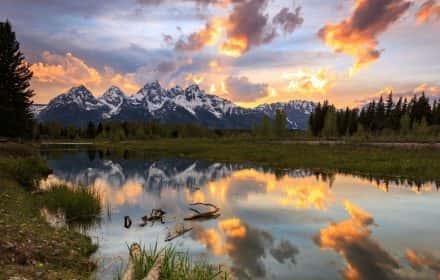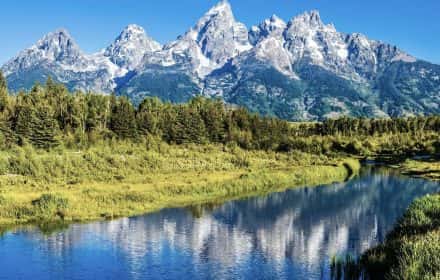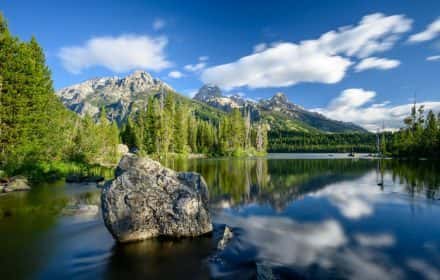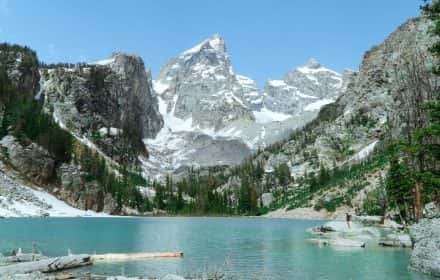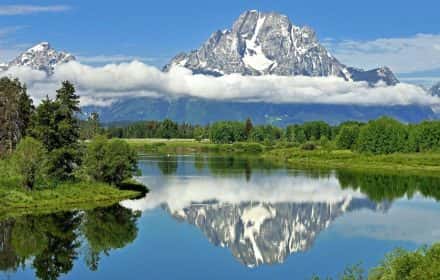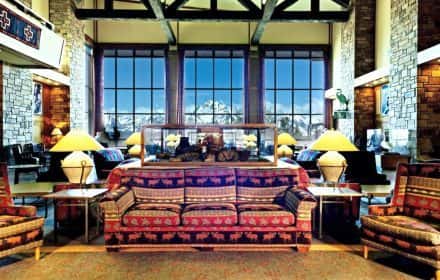This site uses affiliate links, meaning that if you make a purchase through our links, we may earn an affiliate commission.
Grand Teton National Park is full of surprises for wildlife enthusiasts. Of all the national parks that I have visited, I have to say that Grand Teton offers the best opportunities to observe animals in their natural habitat. Here are the 5 best places to see wildlife in Grand Teton National Park.
If you planning a trip to Grand Teton National Park then you should not miss the 42-Mile Scenic Loop Drive in Grand Teton (24 Stops You Can’t Miss). It is a scenic drive (loop) through the park that will take you to some of the best viewpoints.
Do you like to hike? Grand Teton National Park is a hikers’ paradise. The scenery is breathtaking and the views are off the charts. Check out the 17 Most Scenic Hikes in Grand Teton National Park and decide which ones are the best for your fitness level (there are hikes for everyone: short and easy, as well as strenuous and challenging).
Moose in Grand Teton / Best Places to See Wildlife in Grand Teton
- 1. Grand Teton National Park At-A-Glance
- 2. 5 Best Places to See Wildlife in Grand Teton National Park
-
- 2.1. Moose-Wilson Road - Prime Habitat for Moose and Grizzly Bear
- 2.2. Antelope Flats - Premier Area for Bison, Elk, Pronghorn Viewing
- 2.3. Willow Flats - A Tranquil Haven for Varied Wildlife Encounters
- 2.4. Oxbow Bend - A Wildlife Spectacle with Bald Eagles, Trumpeter Swans, Otters and Beavers
- 2.5. Schwabacher Landing - The Best Spot to Observe Beavers
- 3. Intrepid Scout's Tips for the Best Places to See Wildlife in Grand Teton
Grand Teton National Park At-A-Glance
Before diving in, here are a few highlights to help you plan your trip:
- Best Time to Visit Grand Teton National Park
Hands down, summer is the best (and most popular) time to visit Grand Teton National Park. The weather is warm and all park facilities are open. However, my favorite time to visit is early to mid-September. The weather can be awesome in the fall and it is a great time to avoid the crowds and find some solitude on the trails.
- Where to Stay In or Near Grand Teton
Nothing beats staying inside the park! There are several great lodges inside the park. However, you need to make reservations well in advance. If all the lodges are booked, then there are a few places that I stayed at, and I highly recommend them. In addition, there are great campsites inside the park as well. To sum up, before you make any reservations, make sure to check out my post Where to Stay in Grand Teton: 7 Amazing Places to Stay.
- How to Get to Grand Teton National Park
Grand Teton National Park is located in northwestern Wyoming and the closest airports to Grand Teton National Park are Jackson Hole Airport (JAC) – 8 min, Idaho Falls Regional Airport (IDA) – 2 hours, and 11 min, Salt Lake City International Airport (SLC) – 5 hours. Now, Salt Lake City International Airport is a major airport and all major airlines fly into this area from large cities all over the U.S. and internationally. Use Skyscanner to browse flights and find the best price.
- How to Get Around in Grand Teton National Park
There is no shuttle service in the park and the best way to get around is by having your car. I use dicovercars.com to browse deals on rental cars or rent an RV or campervan with Outdoorsy!
- Intrepid Scout’s Tips:
It costs $30 to enter the park. The entrance pass is good for 7 consecutive days. If you are visiting several national parks then make sure to get America the Beautiful National Park Pass. This $80 pass is valid for 12 months and gets you into all 400+ national park sites!
GOOD TO KNOW: There are a couple of wildlife tours that I attended in Grand Teton. Hands down, they were very good! The guides are super knowledgeable and know all the right spots for the best wildlife viewing. Here are some tours that you should check out:
Sunrise 4-Hour Grand Teton Wildlife Adventure – I totally enjoyed this tour! It kicks off early so you can beat the crowds. You will explore hidden spots with an expert guide. Plus, having a pro behind the wheel means that you can I could focus on the stunning scenery. If you haven’t done a morning tour, you’re missing out!
Sunset 4-Hour Grand Teton Wildlife Adventure – If you are not a morning person, I get it! Whenever my daughter joins me in Grand Teton, we always go for a sunset tour. You will have a naturalist wildlife guide who will lead you to the best spots. Equipped with Swarovski scopes, and binoculars, you’ll catch Grand Teton’s active wildlife at sunset. With just seven travelers on board, everyone gets a window seat!
5 Best Places to See Wildlife in Grand Teton National Park
Moose-Wilson Road - Prime Habitat for Moose and Grizzly Bear
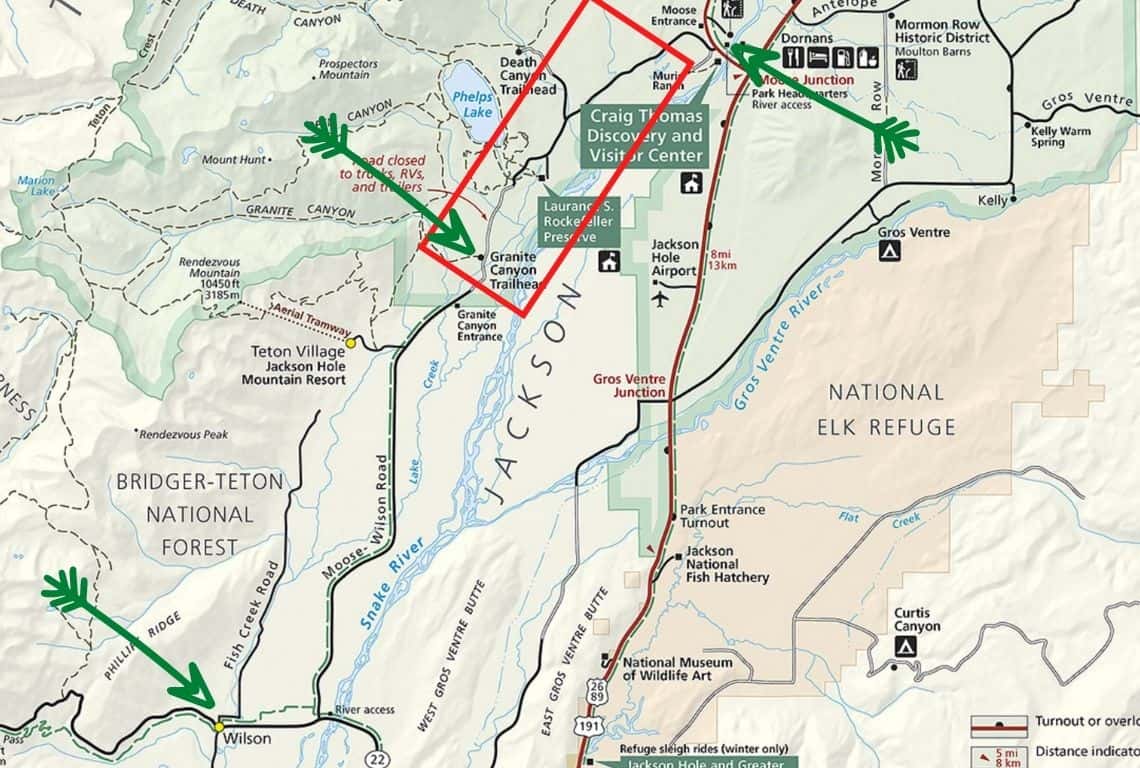
Map of Moose-Wilson Road in Grand Teton National Park. Image Credit: National Park Service / Best Places to See Wildlife in Grand Teton
Moose-Wilson Road (HWY 390) runs from the town of Wilson to the Moose Entrance. It is about 14.6 miles long. However, the part of Moose-Wilson Road that is the best for viewing wildlife, is a narrow, winding 8-mile scenic section that is located between Granite Canyon Trailhead and Moose Entrance.
You can access Moose-Wilson Road from Hwy 22 (south) or Moose Junction (north).
GOOD TO KNOW: What you need to know is that RVs and trailers are prohibited on the 8-mile scenic section of Moose-Wilson Road (from Granite Canyon Trailhead to Moose Entrance).
Moreover, about 1.5 miles of the 8-mile scenic section of Moose-Wilson Road is not paved. It is rather bumpy with some potholes. So, slow down. If you have a 4-wheel drive vehicle, then you should be just fine. However, I have seen all kinds of vehicles on this road.
Also, do not plan on stopping along the way. Unfortunately, over the past few years, the National Park Service has blocked off the majority of pull-outs so there aren’t many spots to stop and view the wildlife. So be on the lookout for wildlife while you are driving.
Your chances of spotting moose on Moose-Wilson Road are pretty good! Be patient and vigilant. Eventually, you will see them, either crossing the road or standing at the edge of the forest.
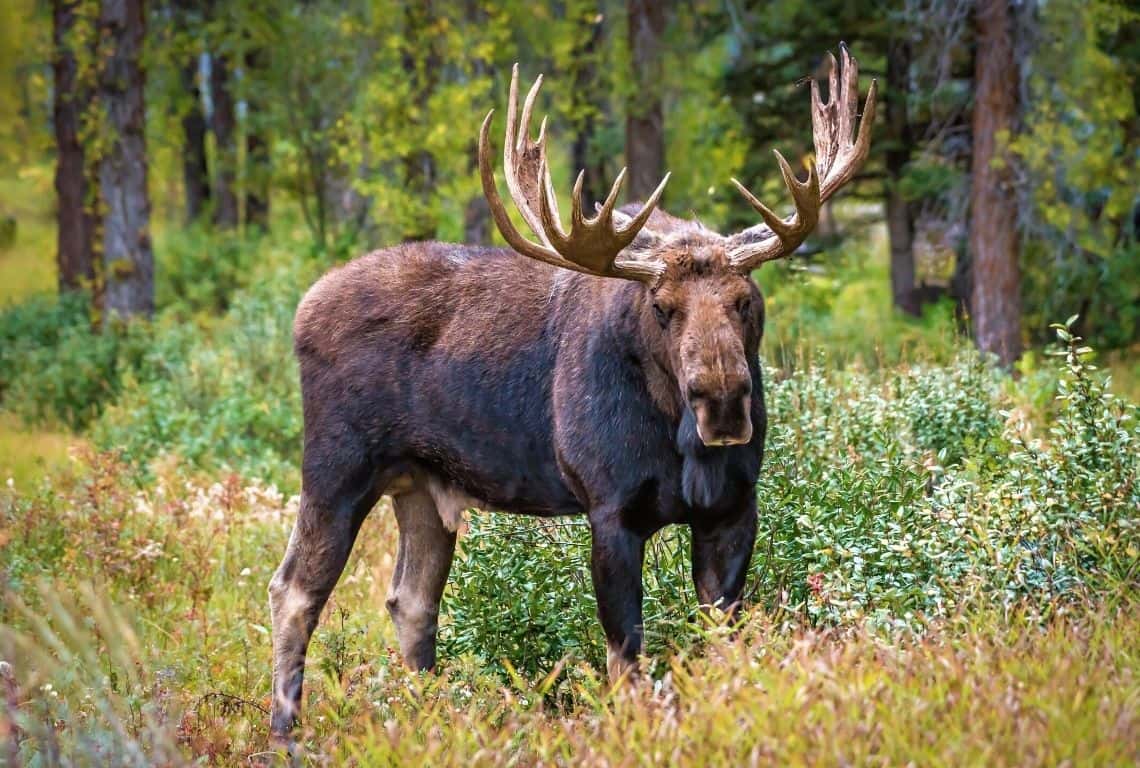
Moose are huge! The average female weighs 771 lbs and the average male weighs 881 lbs / Best Places to See Wildlife in Grand Teton
When I saw a moose for the first time, I was just blown away by its size. They are huge! The average female weighs 771 lbs and the average male weighs 881 lbs and some of them can get up to 1,800 lbs!
Their average length is just shy of 8 to just under 10 feet. A bull moose’s antlers can spread up to six feet from end to end.
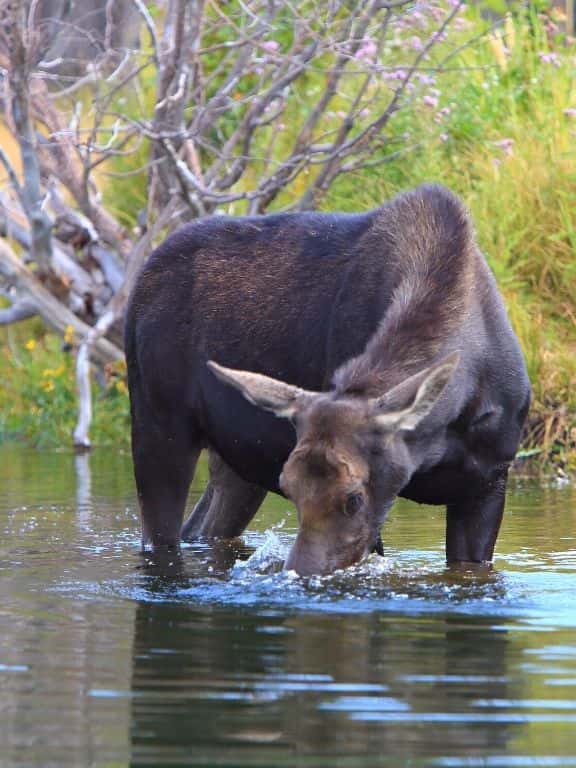
Moose have no upper front teeth / Best Places to See Wildlife in Grand Teton
Moose are incredibly near-sighted. Their eyes are great for spotting nutrient-rich vegetation on the bottom of ponds and shallow lakes while they graze, but they can’t see across long distances worth anything.
They can store 100 lbs of food in their stomachs!
They can close their nostrils, which gives them the ability to graze under the water. Also, moose have no upper front teeth. This space allows them to suck small marine plants into their mouth while grazing underwater.
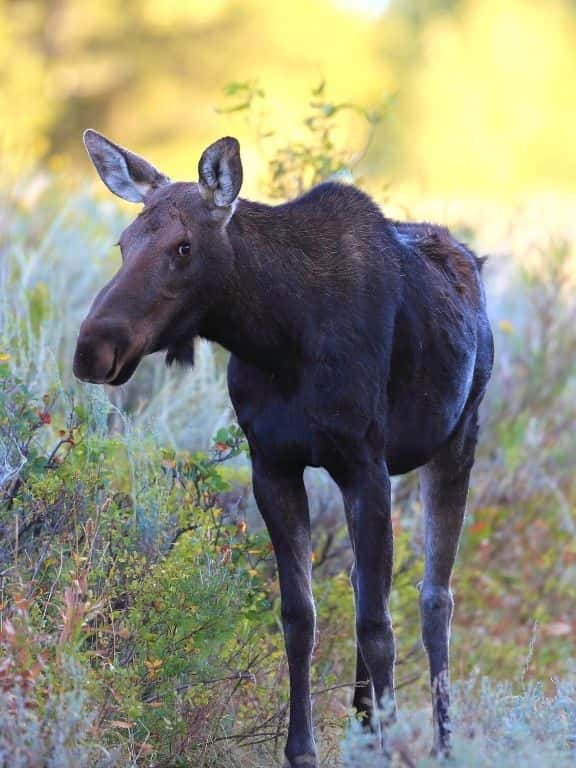
Moose are incredibly near-sighted / Best Places to See Wildlife in Grand Teton
Females (cows) often give birth to twins, and even sometimes triplets. They are very attentive and protective mothers.
Calves are able to browse alongside their mothers after around 3 weeks and are weaned at about 5 months. They however stay with their mothers for at least a year.
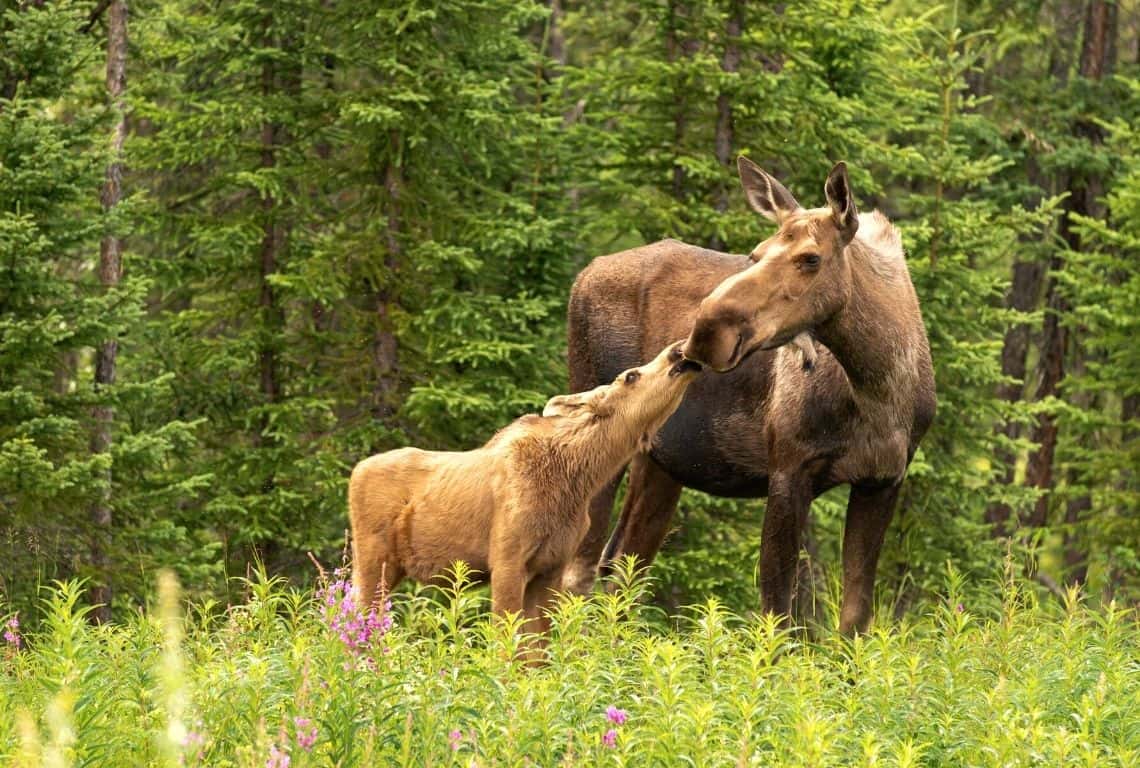
Females (cows) are very attentive and protective mothers / Best Places to See Wildlife in Grand Teton
Moose-Wilson Road (HWY 390) is famous for many sightseeing of grizzly bears.
Especially look for the famous Grizzly 399 (born 1996) inhabiting Grand Teton National Park and Bridger-Teton National Forest!
GOOD TO KNOW: Grizzly 399 is the most famous brown bear mother in the world, with her own Facebook and Twitter accounts. She is followed by as many as 40 wildlife photographers, and millions of tourists come to the Greater Yellowstone Ecosystem to see her and her cubs.
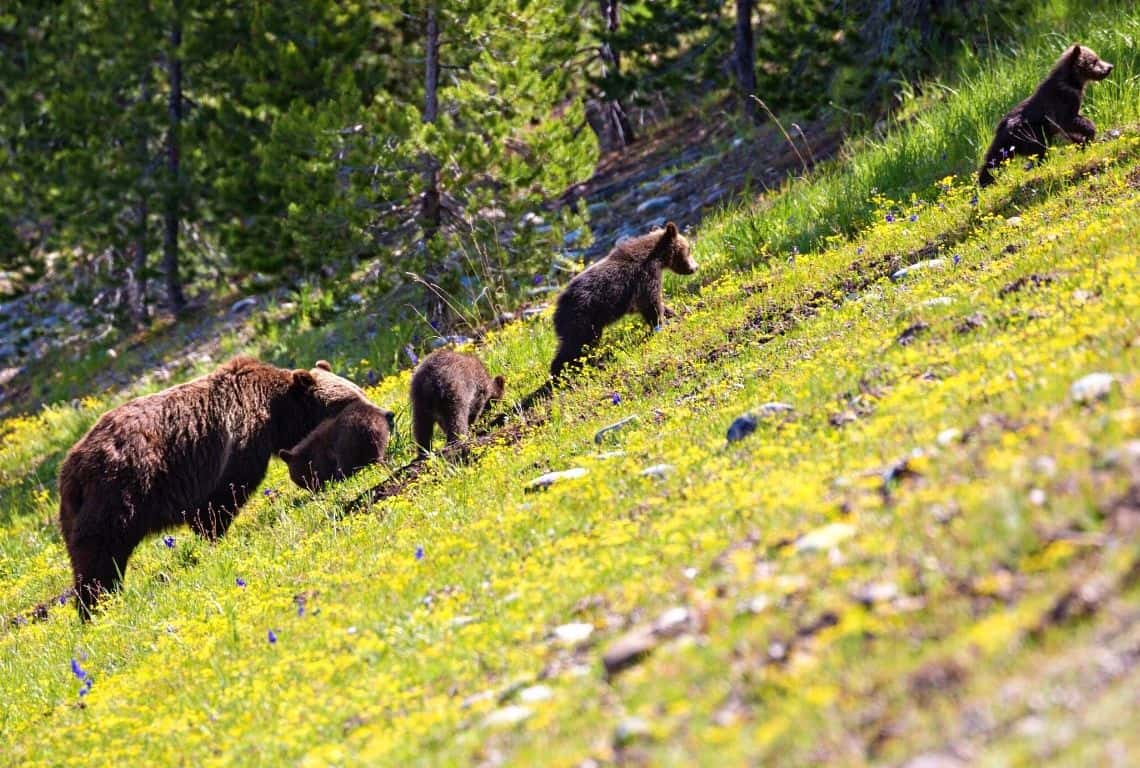
Grizzly 399 is the most famous brown bear mother in the world, with her own Facebook and Twitter accounts / Best Places to See Wildlife in Grand Teton
Grizzly 399 is known for having become habituated to people when near roads and mildly developed areas.
A researcher determined that she seeks these roadside areas over the backcountry because it is safer for her cubs, where male bears often try to kill them.
The fact that she spends much time near roads has also contributed to her popularity.
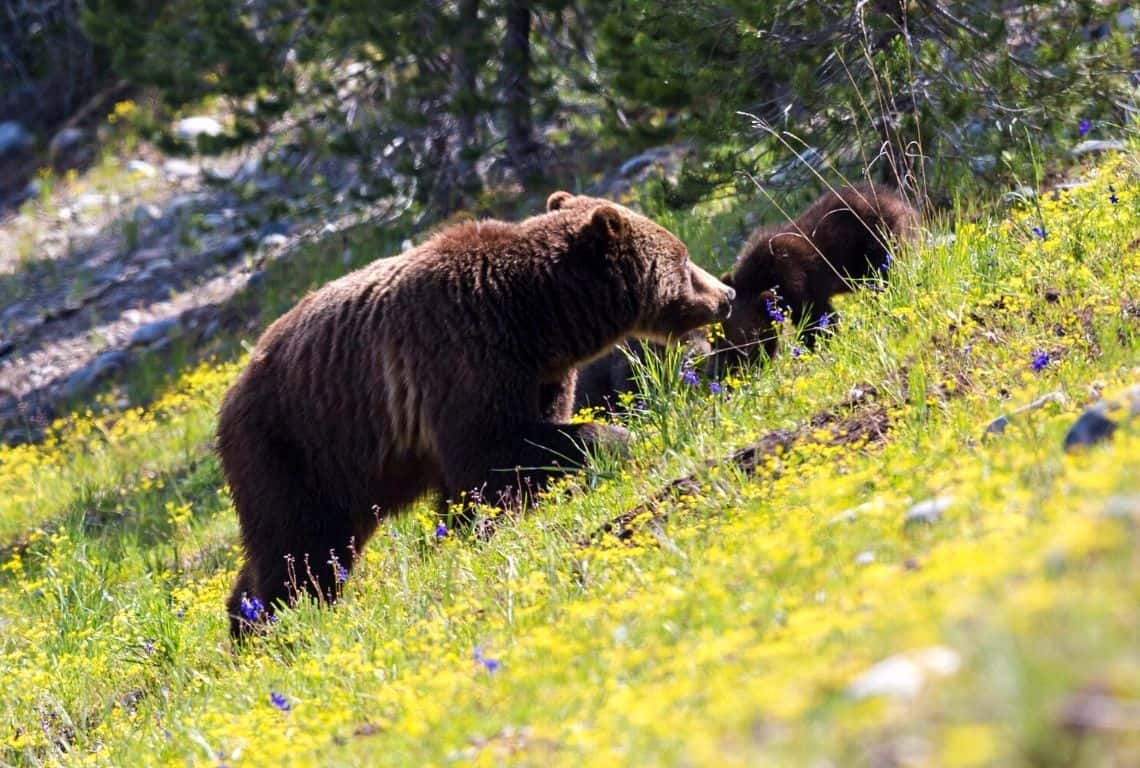
A researcher determined that she seeks these roadside areas over the backcountry because it is safer for her cubs / Best Places to See Wildlife in Grand Teton
She has reared much successful progeny, including 16 cubs and grand cubs. In mid-May 2020 she was observed with four new cubs born the previous winter.
One of her offspring grew to also be a prolific mother and was tagged for research as Grizzly 610.
In 2011, Grizzly 610 had twins while Grizzly 399 had another set of triplets. The scientists observing the bears were concerned due to 399’s advanced age, but to their surprise, Grizzly 610 amicably adopted one of her mother’s triplets.

Best Places to See Wildlife in Grand Teton
Grizzly Bear in Grand Teton / Best Places to See Wildlife in Grand Teton
Antelope Flats - Premier Area for Bison, Elk, Pronghorn Viewing
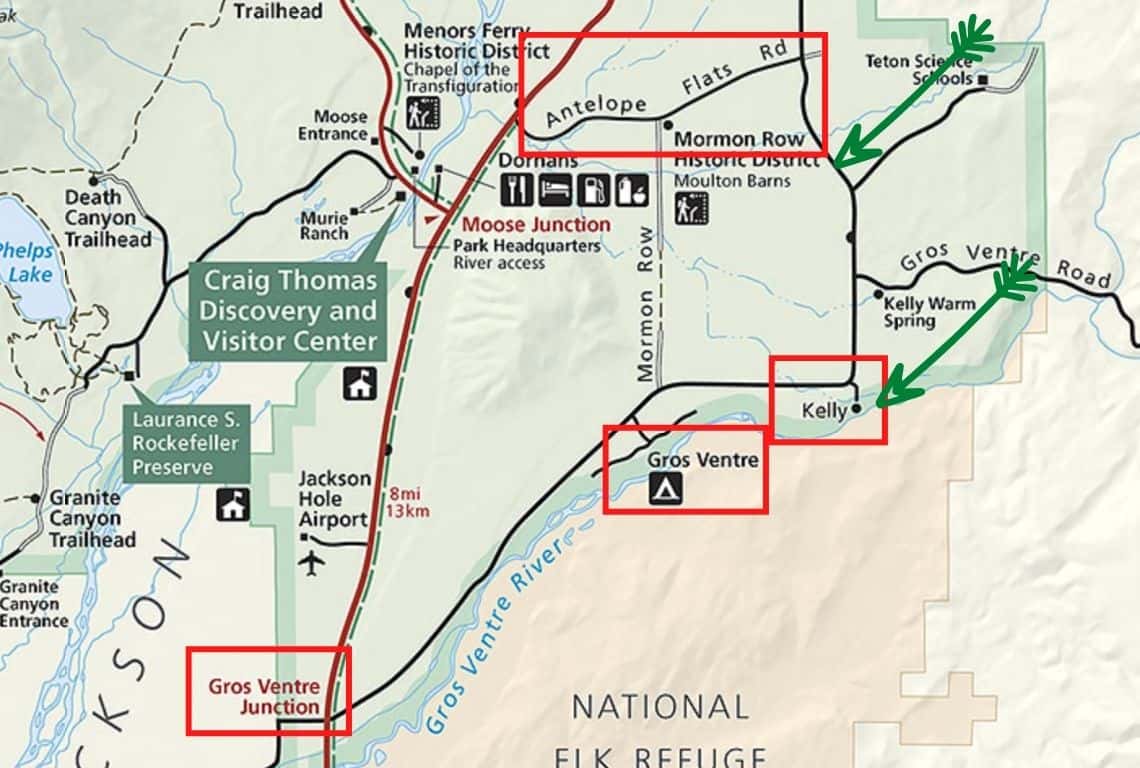
Map of Antelope Flats in Grand Teton National Park. Image Credit: National Park Service / Best Places to See Wildlife in Grand Teton
Antelope Flats is one of the most epic locations in the American West! It covers an area of 640 acres and offers the most spectacular mountain views.
GOOD TO KNOW: Antelope Flats lies in the path of a primary migration route for pronghorn, bison, and elk, just to name a few. It is a great place to spot coyotes, northern harriers, sage grouse, and American kestrels.
INTREPID’S PRO TIP: To get to Antelope Flats, take Antelope Flats Road off Hwy 191/89/26. Go past the junction for Mormon Row. Continue straight until you reach a three-way intersection. At the intersection, turn right. Right in front of you will be majestic Antelope Flats. Continue driving past the town of Kelly and the Gros Ventre campground until you reach Gros Ventre Junction and rejoin Hwy 191/89/26.
Did you know that on December 12, 2016, the NPS purchased 640 acres within Grand Teton National Park from the State of Wyoming?
The Antelope Flats acquisition was made possible by an 8-month fundraising campaign by GTNP Foundation which raised $23 million in private funds and was matched by $23 million from the Federal Land and Water Conservation Fund.
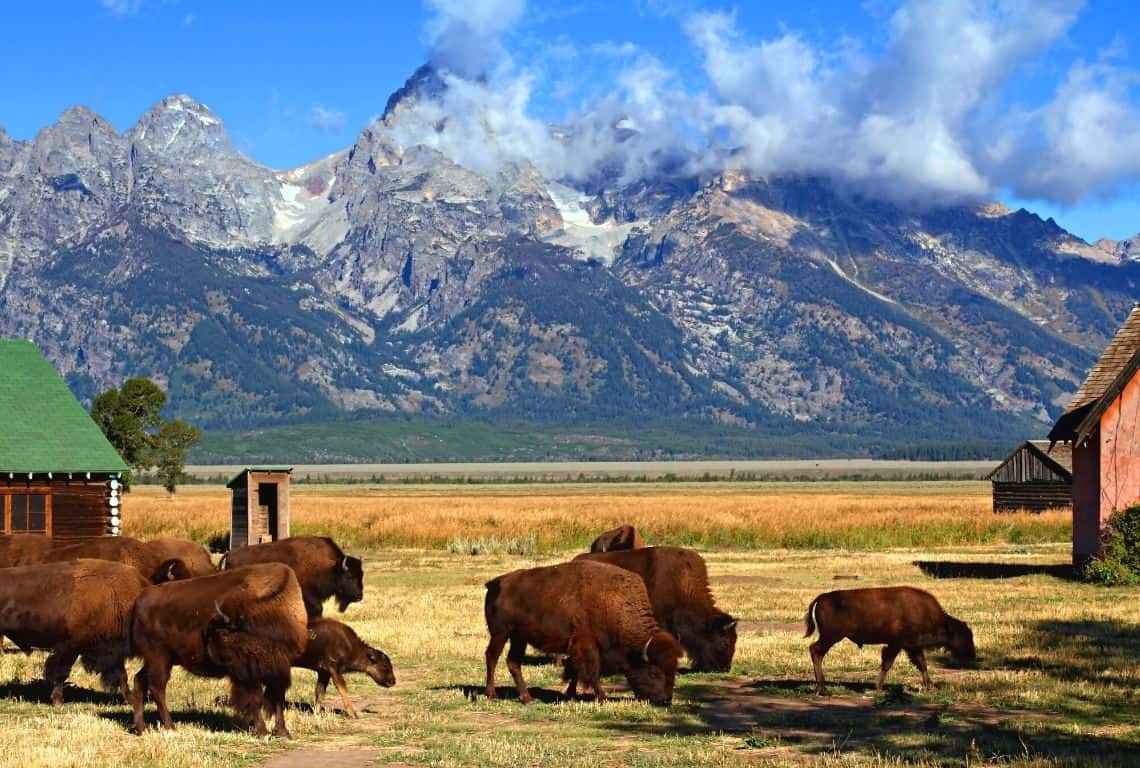
Antelope Flats lies in the path of a primary migration route for pronghorn, bison, and elk / Best Places to See Wildlife in Grand Teton
I think your chances of seeing a bison are very good on Antelope Flats Road.
Did you know that bison is the largest North American land mammal? Adult males can weigh up to 2,000 pounds! They look docile but be very cautious and do not approach them. They can jump a 6-foot fence from a standstill and gallop at speeds up to 35 mph.
Before their near extermination, an estimated 30 million to 60 million bison ranged from Canada to northern Mexico and from the Plains to Eastern forests.
By about 1890, roughly 1,000 remained, including two dozen in Yellowstone National Park. Conservation efforts have restored numbers from some 1,000 animals to about 500,000.
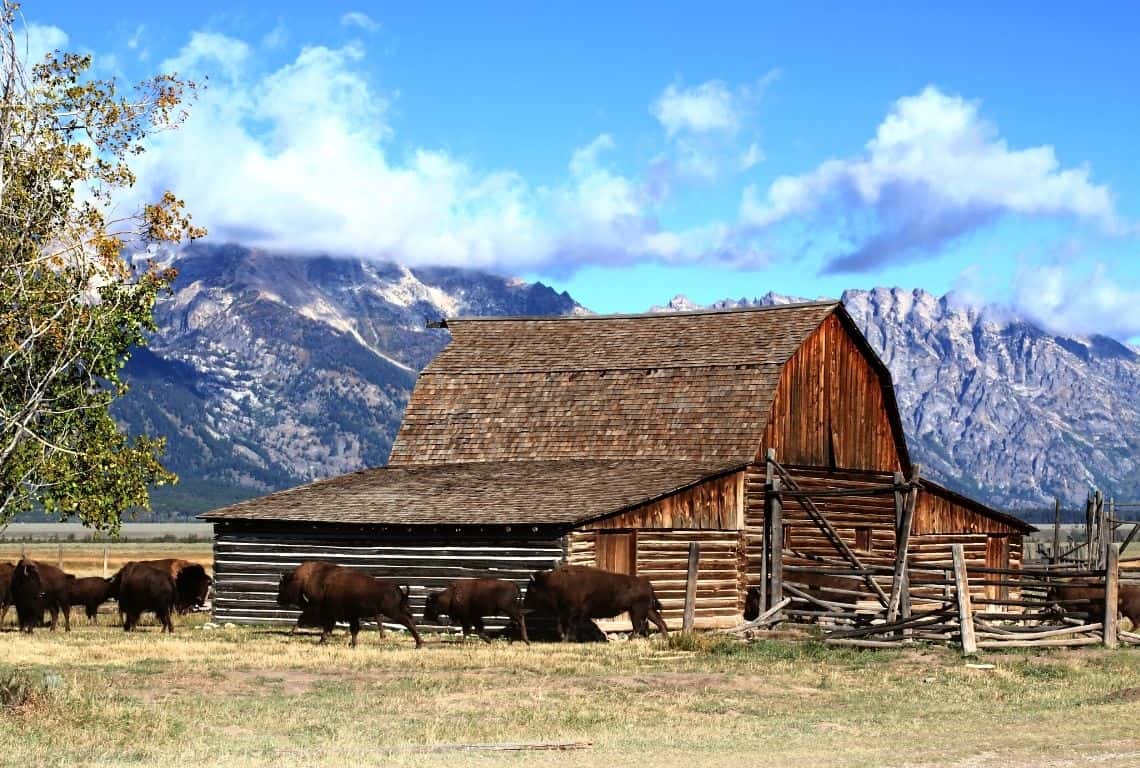
Best Places to See Wildlife in Grand Teton
I hope you get to see the great pronghorn migration! it happens each spring and fall when hundreds of pronghorn travel 170 miles to and from their summer range in Grand Teton National Park. This great pronghorn migration, named by U.S. biologists as the Path of the Pronghorn, is remarkable and one of the last, long-distance land animal migrations in the world.
Pronghorns are the fastest land mammal in North America. Their average running speed is 40 MPH, but they can run at speeds of up to 60 MPH for long distances. Pronghorns have 13 distinct gaits – one reaches up to 20 feet per stride.
Pronghorns got their name from the horns that point backward toward their rump and then prong. Both sexes have horns, but the buck’s horns are longer and measure 12 to 16 inches.
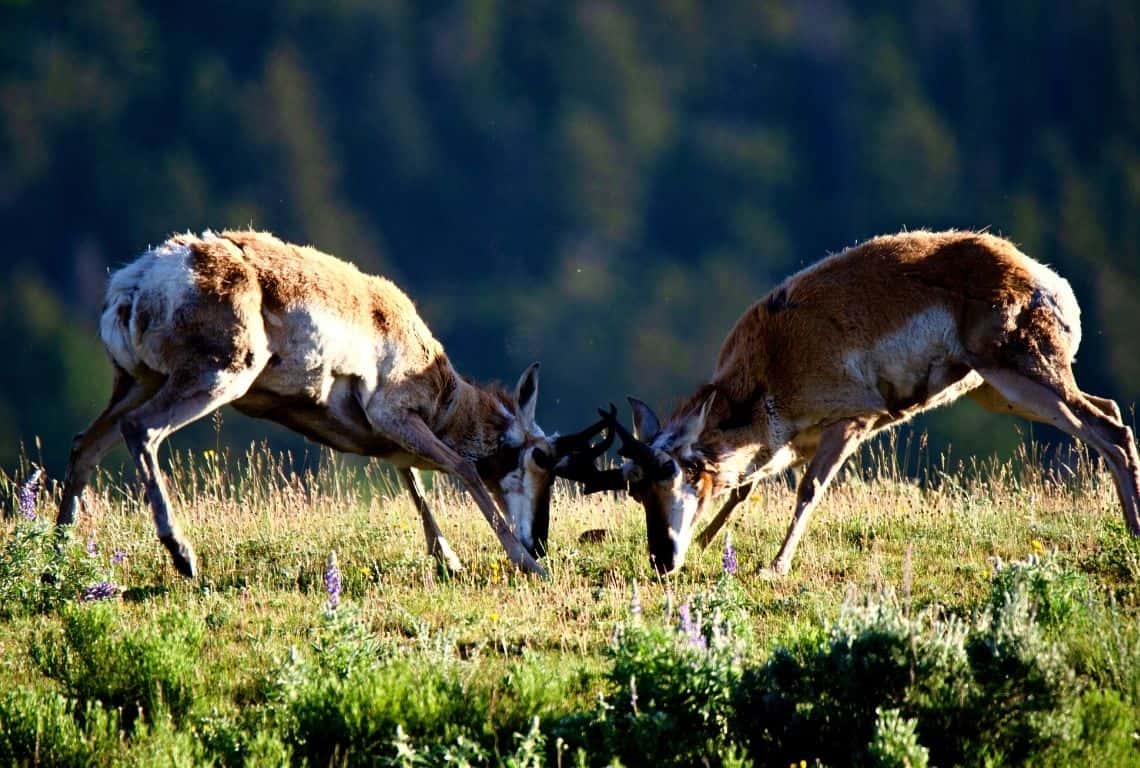
The Path of the Pronghorn is remarkable and one of the last, long-distance land animal migrations in the world / Best Places to See Wildlife in Grand Teton
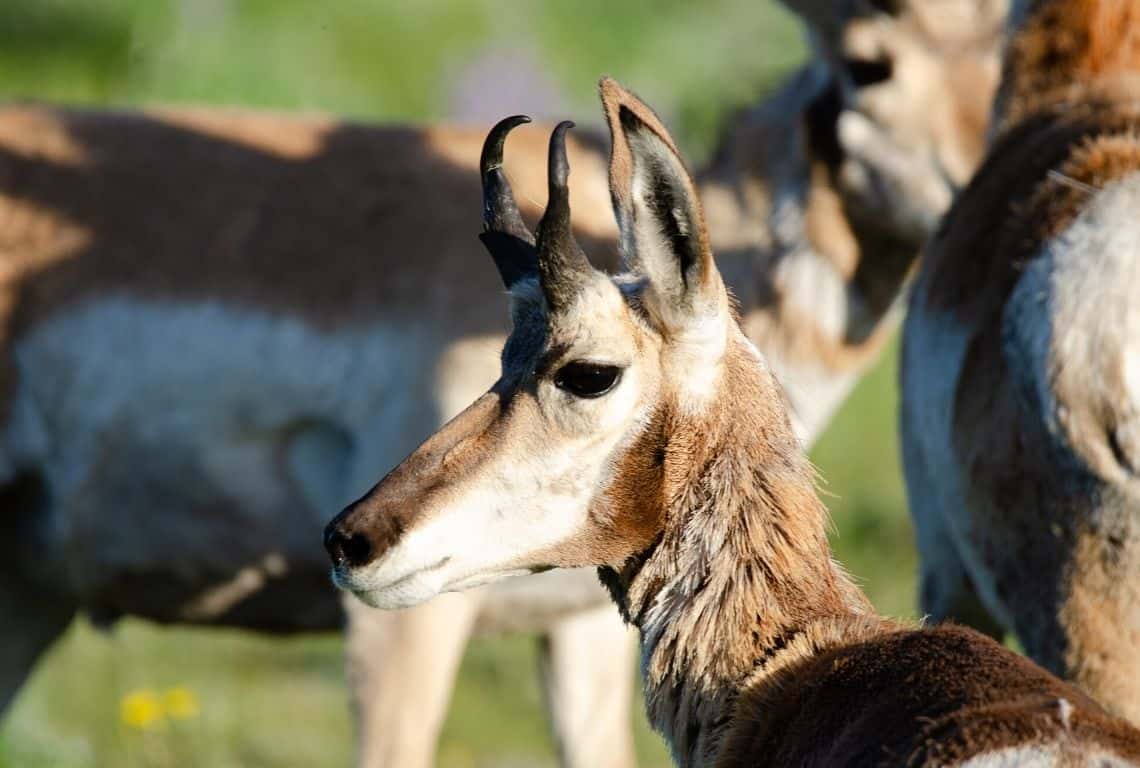
Pronghorns got their name from the horns that point backward toward their rump and then prong / Best Places to See Wildlife in Grand Teton
Willow Flats - A Tranquil Haven for Varied Wildlife Encounters
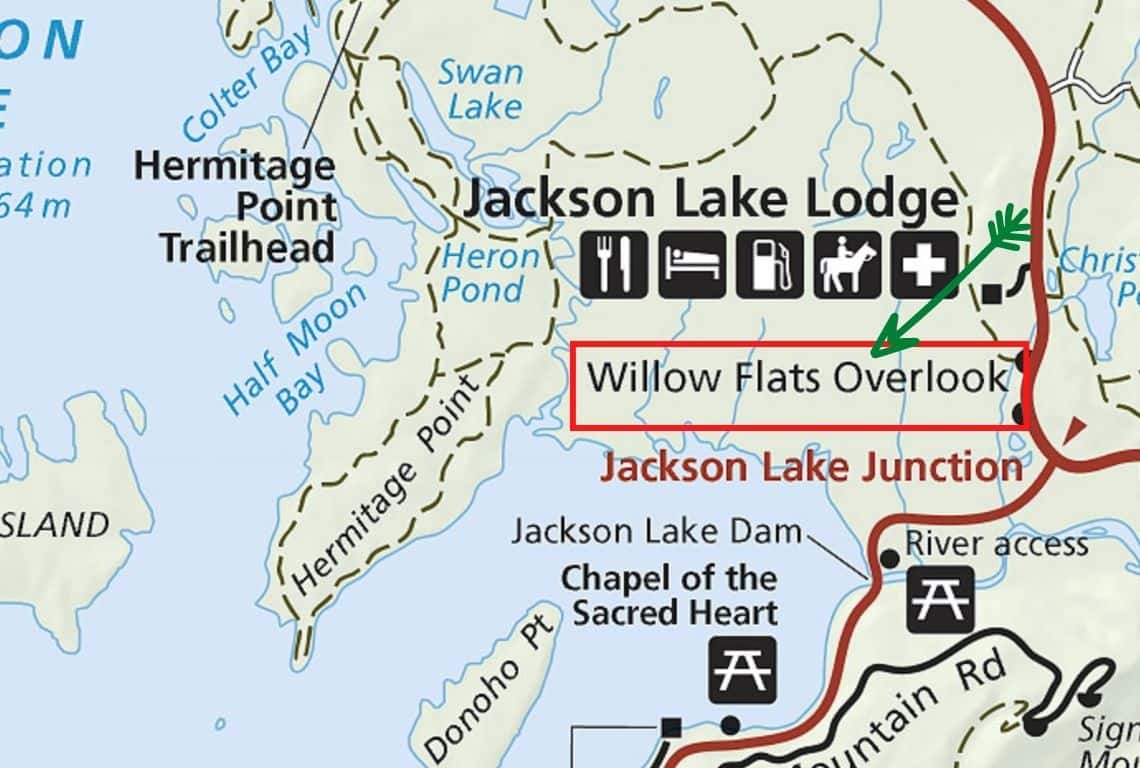
Map of Willow Flats Overlook in Grand Teton National Park. Image Credit: National Park Service / Best Places to See Wildlife in Grand Teton
Willow Flats is located between Jackson Junction and Jackson Lake Lodge. To get there, take Hwy 287/191/89 north until you reach Willow Flats Overlook.
Willow Flats is used by elk during their calving season (mid-May to mid-June). Moreover, during the summer months, you might be able to spot a bear in pursuit of elk calves. In addition, be on the lookout for coyotes.
GOOD TO KNOW: The best time to see animals here is in the early morning while they are feeding. Once they bed down for the day, they become very difficult to see in the tall grass and willows.
The evening is also a great time to view wildlife here because once again, as it begins to cool down, the animals start feeding and moving around again.
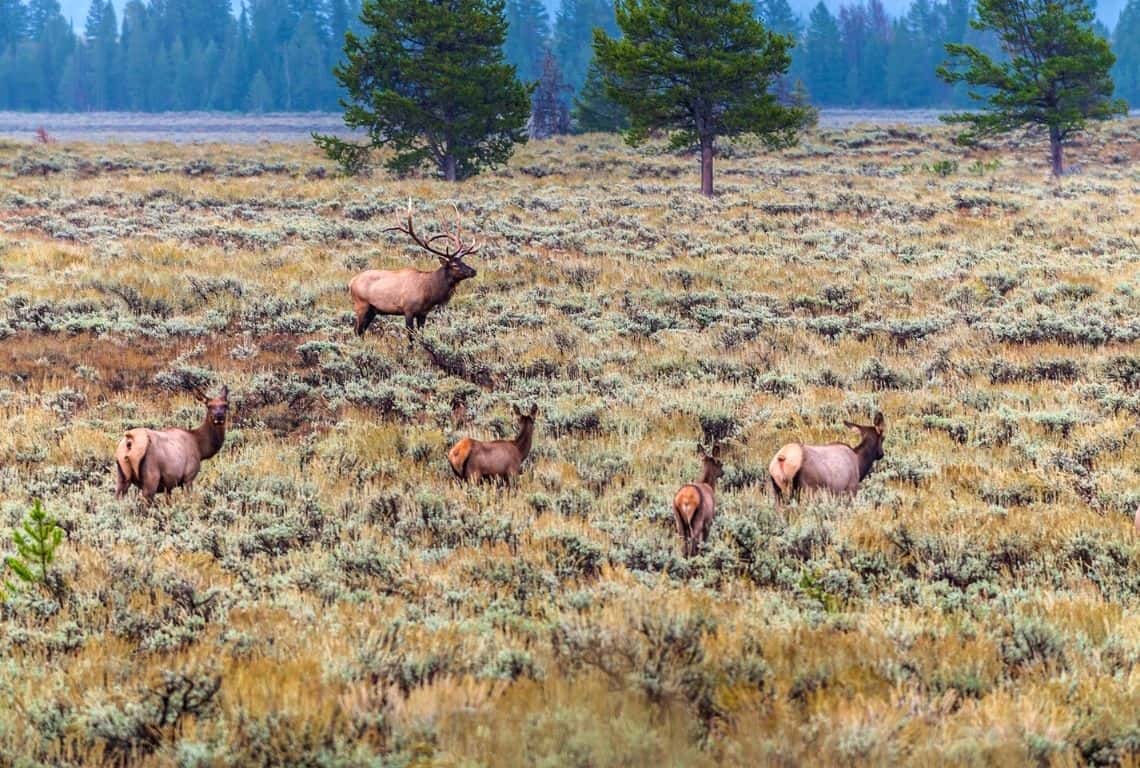
Willow Flats is used by elk during their calving season / Best Places to See Wildlife in Grand Teton
Oxbow Bend - A Wildlife Spectacle with Bald Eagles, Trumpeter Swans, Otters and Beavers

Map of Oxbow Bend in Grand Teton National Park. Image Credit: National Park Service / Best Places to See Wildlife in Grand Teton
Oxbow Bend is one of the best places to see wildlife in Grand Teton. It is a great spot to see bald eagles, trumpeter swans, and osprey. In addition, you might get a chance to see otters, beavers, and muskrats swimming in the waters of the Snake River. Also, be on the lookout for river otters!
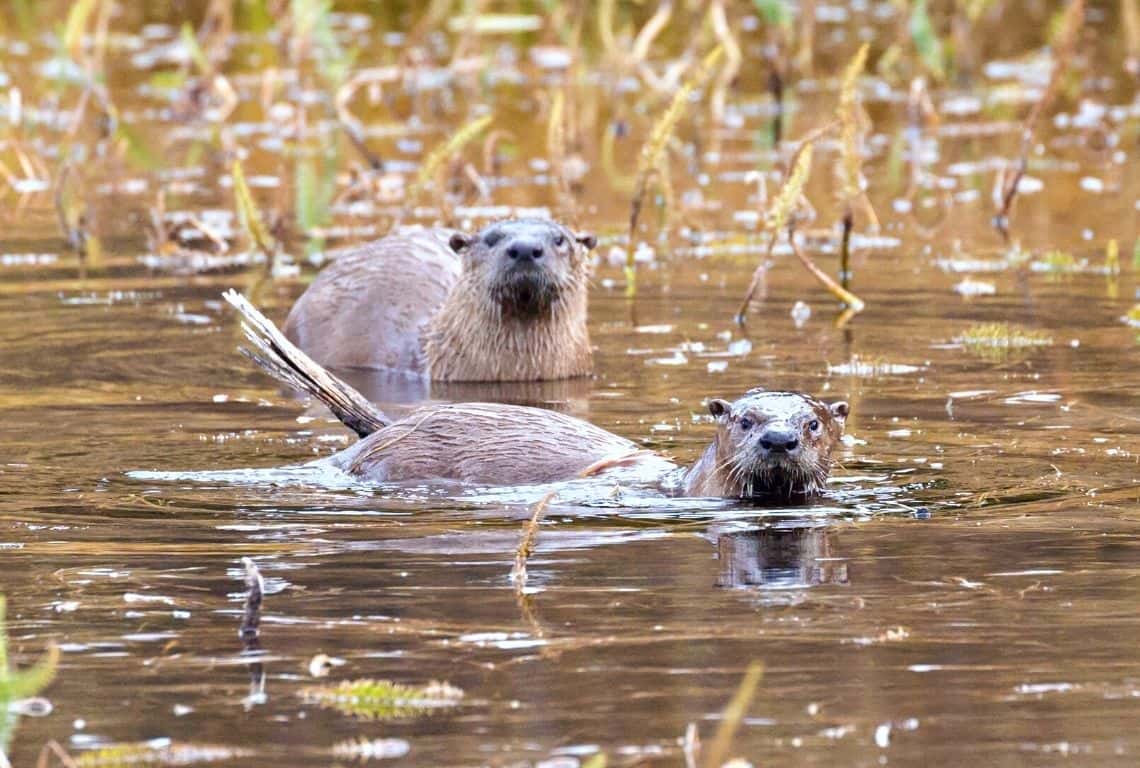
River Otters are capable of staying submerged for up to 4 minutes / Best Places to See Wildlife in Grand Teton
River Otters are capable of staying submerged for up to 4 minutes and of swimming a quarter of a mile underwater.
River Otters are very sociable. You will usually them in family groups. It is fun to watch otters play. They like to chase each other and toss and dive for rocks.
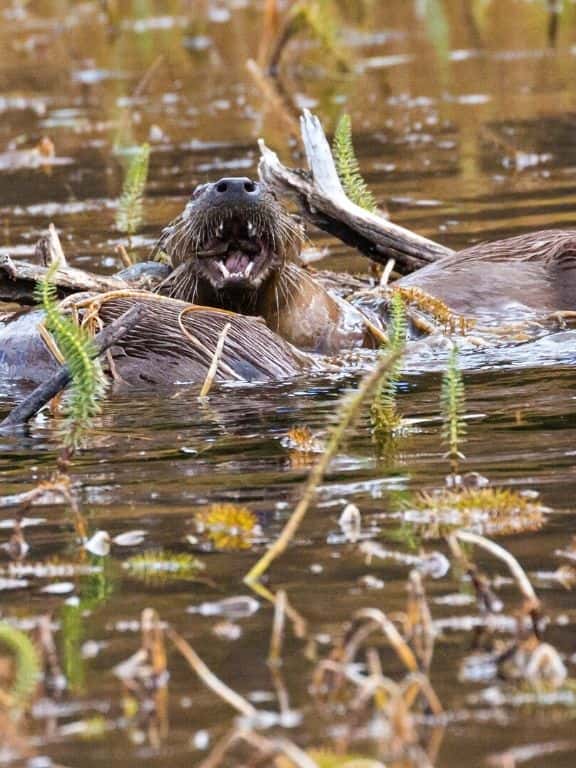
River otters are very sociable / Best Places to See Wildlife in Grand Teton
Schwabacher Landing - The Best Spot to Observe Beavers
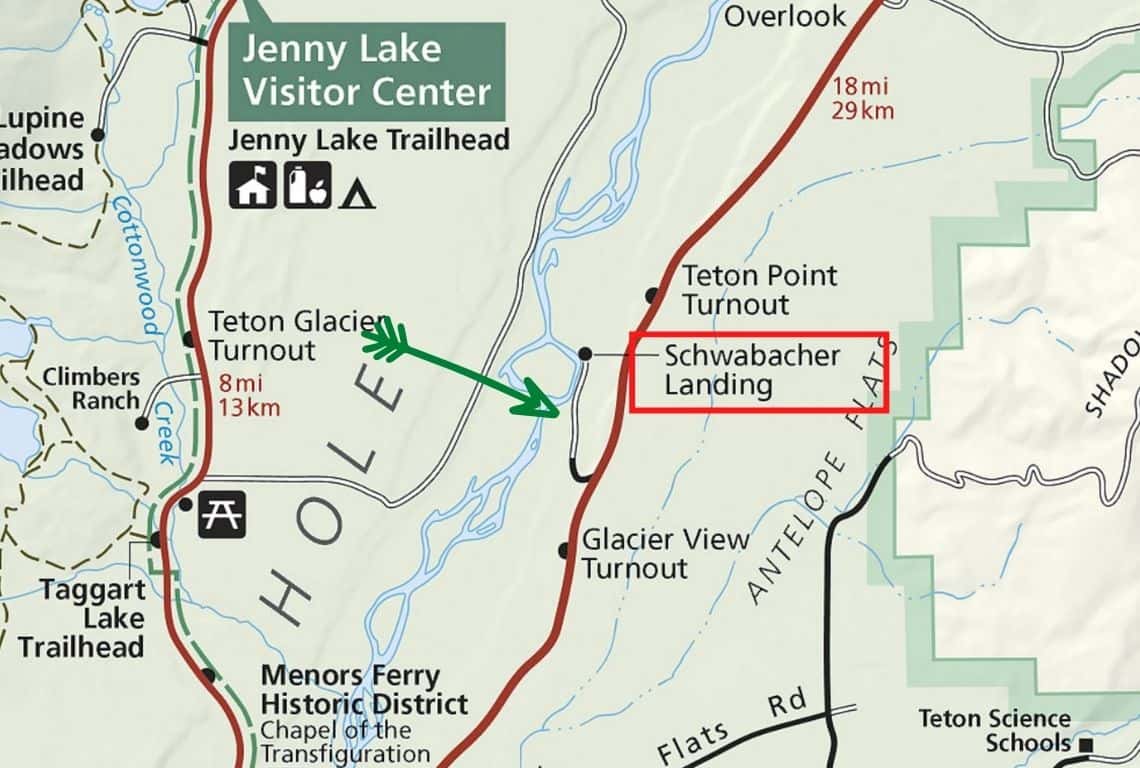
Map of Schwabacher Landing in Grand Teton National Park. Image Credit: National Park Service / Best Places to See Wildlife in Grand Teton
Schwabacher’s Landing is another very popular spot to see wildlife in Grand Teton.
There is a trail that starts at the parking lot and goes along Snake River. So, plenty of great places to see wildlife. At about two-tenths of a mile from the parking lot, you will get to a beaver dam and hopefully, you will be able to spot some beavers.
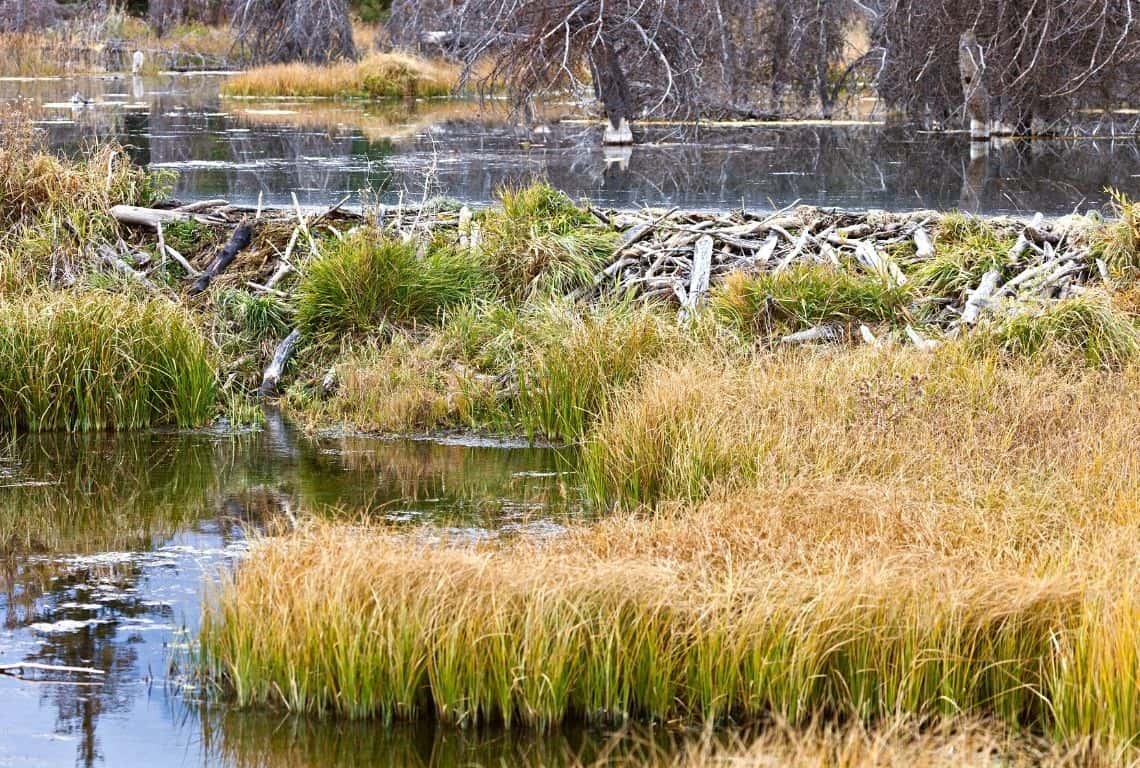
Beaver dams at Schwabacher’s Landing / Best Places to See Wildlife in Grand Teton
April 7 is International Beaver Day! So, here are some cool facts about beavers:
- Beavers have long incisors that get their orange color from an iron-rich protective coating of enamel. Their teeth grow continuously throughout their life, but daily use helps trim them down.
- Beavers build watertight dams made of woven sticks, reeds, branches, and saplings caulked together with mud and rocks.
- Beavers build dome-like lodges that are often constructed away from the shore, forming islands that can only be entered from the water. A lodge can have multiple underwater entrances, with living quarters located at the top above the waterline.
- Beavers communicate using scents, vocalizations, and posturing, but one of their most important signals is the tail slap. Typically performed by an adult, this loud alarm signal alerts others to seek refuge in deep water and may even frighten a potential predator away.
Source: Smithsonian’s National Zoo and Conservation Institute
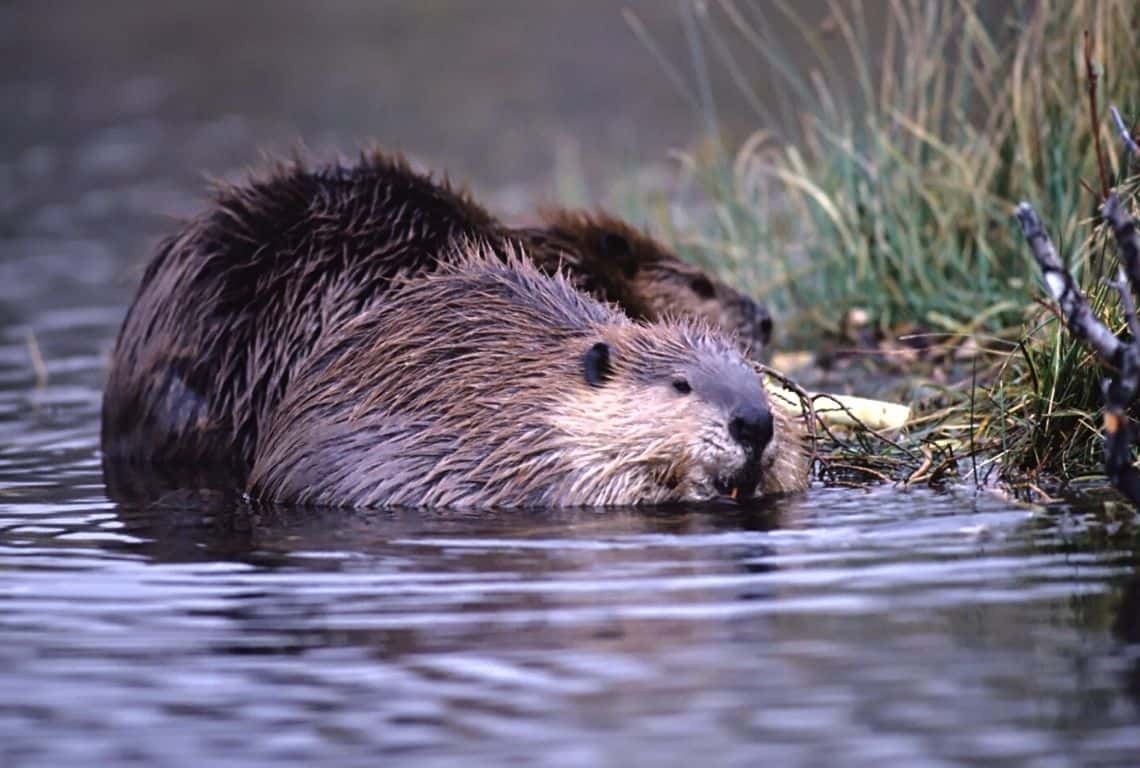
Beavers have long incisors that get their orange color from an iron-rich protective coating of enamel / Best Places to See Wildlife in Grand Teton
Intrepid Scout's Tips for the Best Places to See Wildlife in Grand Teton
Here are some important tips on wildlife viewing etiquette that will help keep you and the animals safe:
- Keep a safe distance– this is critical for your well-being and for the animals you encounter. It is never safe to approach a wild animal. Use a pair of binoculars! A zoom or telephoto lens will help capture the moment on film.
- Avoid making too much noise – while making your presence known on hiking trails is a standard safety precaution to prevent surprise encounters, it’s equally important to avoid making loud noises when observing wildlife in its natural habitat.
- Be aware of breeding seasons – tensions run high during rutting season and males naturally become more aggressive. Also, maintain a respectful distance to help alleviate stress for mothers and their offspring.
- Never feed wildlife – animals in the wild should never depend on humans for food. Throw all waste into a bear-resistant garbage disposal. or pack it out with you. And remember, no matter how cute, feeding a wild animal takes away the healthy fear of humans that makes it wild.
Source: Pursuit
More Helpful Posts About Grand Teton National Park:
Did You Find This Useful?
Why Not Save the Best Places to See Wildlife in Grand Teton to Your Pinterest Board!
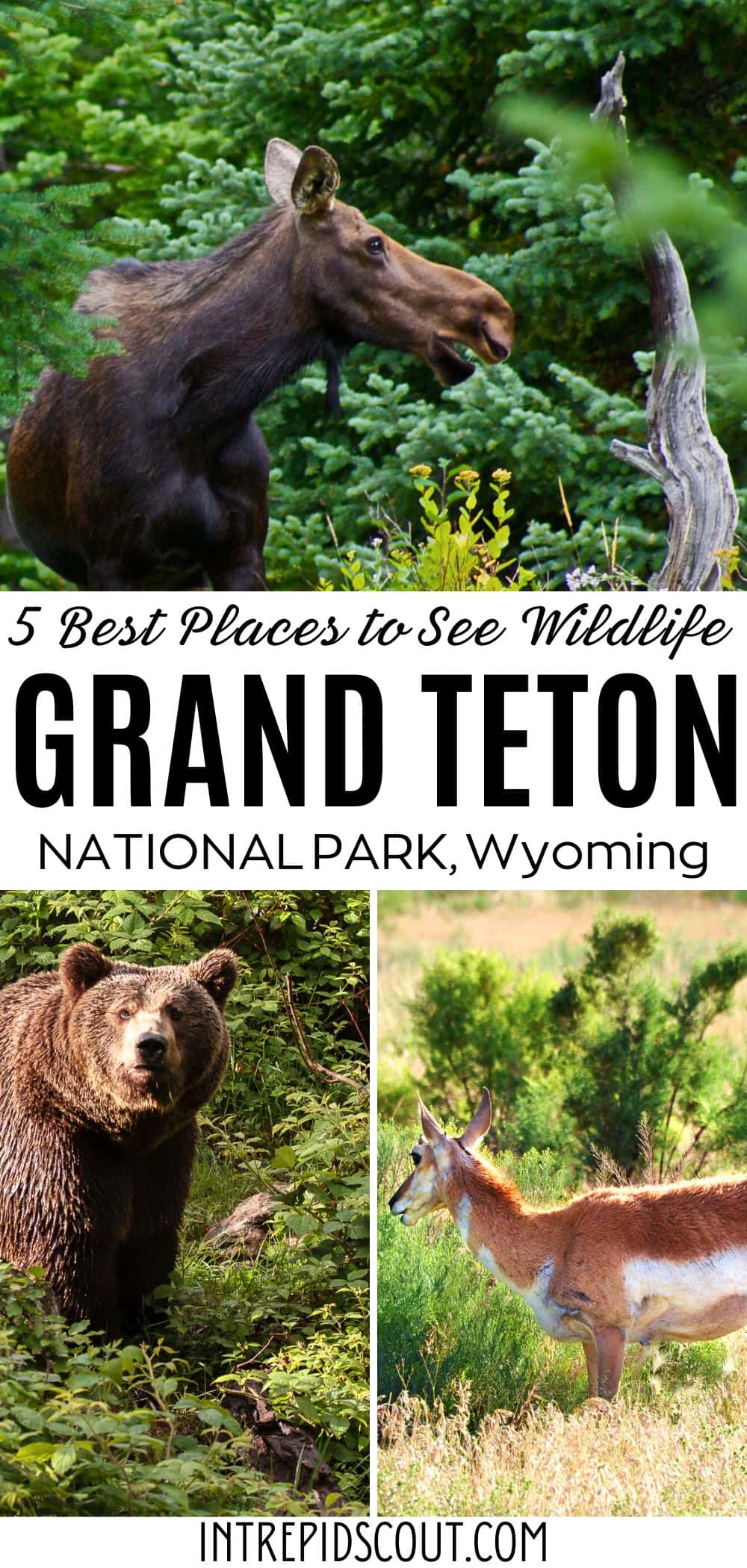
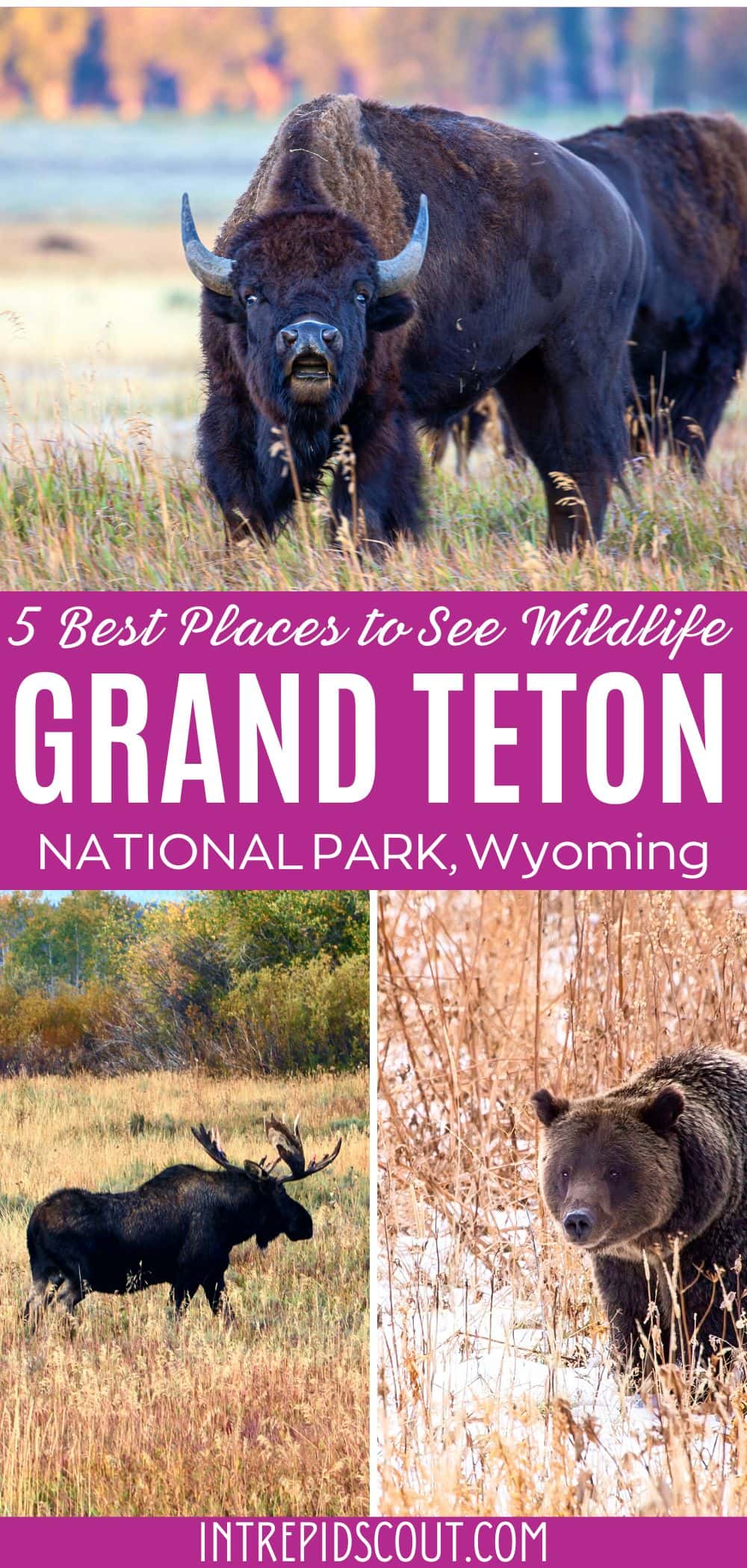
Now, It Is Your Turn, I Would Like to Hear Back from You!
Are you planning your trip to Grand Teton National Park?
Please let me know! Drop me a quick comment right below!
Click on any of the images below to get inspired and to help you with the planning process with your trip to Grand Teton National Park!
